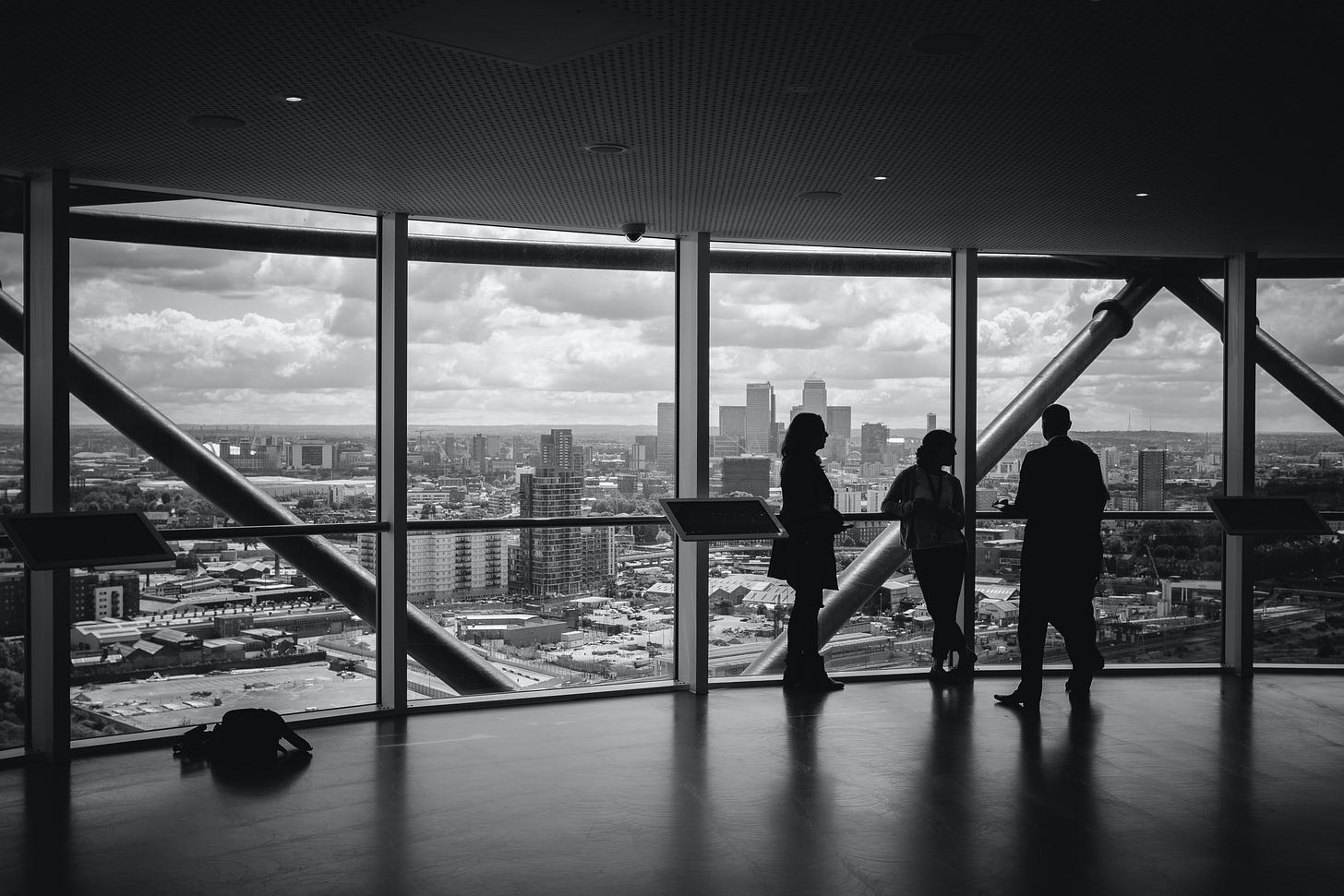Sorry for missing out last week. Completely caught up in discussions about labs and spaces, and the day job as well too. Here’s this week’s Innovation Exchange:

You may have missed this in the larger scheme of things in the world today, but TM Lewin, one of the most well known high street formal wear brands in the UK went into administration this week. TM Lewin was a hundred and twenty year old brand that didn't survive the twists of the pandemic life. There are a couple of interesting lessons to learn from this. The first is that 'this has never happened before' is not a safeguard against it happening in the future. In the case of TM Lewin, it had actually happened before - just 2 years ago - when they went into administration and were rescued by an investor. But they weren't able to make. The British Government just took suits out of the inflation index, a clear indication that suits and formals were not considered essential office wear any more. That's the second lesson - how aware are we of the changing landscape around us? After all their closest competitors, Charles Tyrwhitt are conspicuously advertising casual work wear. To be honest I don't know about the financial health of Charles Tyrwhitt, but there's clearly a difference in their communications approach.
I have to confess, I hate suits, and the only thing I've bought from TM Lewin are a shirt and a pair of cufflinks the latter of which I promptly lost. But reading about their struggles reminded me about the relationship between our environment and our work. This extends from our apparel to our desks, and even our offices. And the reason this has been extra relevant is that we've been thinking about an innovation lab in London. We been speaking with agencies and having internal discussions, and I've been outside my comfort zone thinking of space planning, and audio visual technologies, and trying to answer the deeper question of what would make a space truly conducive to innovation?
After all innovation in our world is one part creativity, one part productivity and one part future tech. Future tech sounds good in theory but you have to be able to touch and feel it to bring it to life. The Wonderlab at the science museum in London, the Experimentarium in Copenhagen, or the Exploratorium in SF are places where children (and adults) can do exactly this in an immersive, tactile way. Productivity is also something we understand reasonably well from our our current offices work. But creativity? Creativity is the great unknown. What makes a space creative? In my experience, rather than a manicured space dressed up like a playroom, what really fosters creativity is the very opposite - spaces which are basic and hackable. Nothing embodies this more than the example of legendary Building 20 at the MIT.
Building 20 was built 'hastily' during WW II and was due to be demolished shortly. But because it was a supposedly temporary construction and had no real mandate, it ended up housing a diverse set of research teams who didn't necessarily fit elsewhere. And because they had the freedom of the space, they hacked it. They broke through walls and reshaped spaces. By the time the building was actually demolished in 1998, it had housed a number of Nobel Prize-winning scientists, and a range of ground breaking work. It is said that projects that would not be allowed elsewhere found a home here. And a diverse set of programs from linguistics, education, acoustics, electronics, cosmology, and biology were all to be found in the building. Amar Bose reinvented the speaker here. Noam Chomsky built his school of linguistics here. Predecessors of atomic clocks, and microwave astronomy were found here, and It even had the early versions of hacker culture. It was a building that deserved its own obituary in the NYT, and its special mention as in a collection of ‘love letters to the building’ at MIT.
So this is what has been in my mind - how do we create hackable spaces? Where people feel comfortable to create, not be scared to disturb. What's the right level of controlled chaos that induces the 'why not' way of thinking? What kind of spaces do scientists, artists, or writers need? I remember visiting the home of Hemingway (one of my most favourite authors) in Key West, Florida, and seeing a surprisingly well organised and neat room with a desk and a typewriter. But by all accounts, Hemingway's life was chaotic enough, and legend has it that he would often get into arguments and brawls in the local bars, and stumble back to his home. Hardly the lifestyle befitting such a pristine space! Pablo Picasso said 'you are what you keep' and hoarded everyday things that meant something to him, and found ways to turn that clutter and chaos into meaning.
How then do we create spaces that can maximise controlled chaos in today’s world? I'd love to hear your thoughts and experiences.
Reading this Week:
Blockchain: An explanation of proof of stake which can potentially reduce blockchain (bitcoin) energy consumption by 99%, compared to proof of work which is currently used.
AI: Stanford University’s AI Index Report makes for some good, albeit heavy reading.
Exponentials: Azeem Azhar’s post has an interesting take on accelerating exponentials and driving the economic benefits earlier.
EV: A report by Michigan University on the impact of automation on long haul trucking operating hours. 500,000 jobs could be replaced by autonomous vehicles.
Have a great week!



